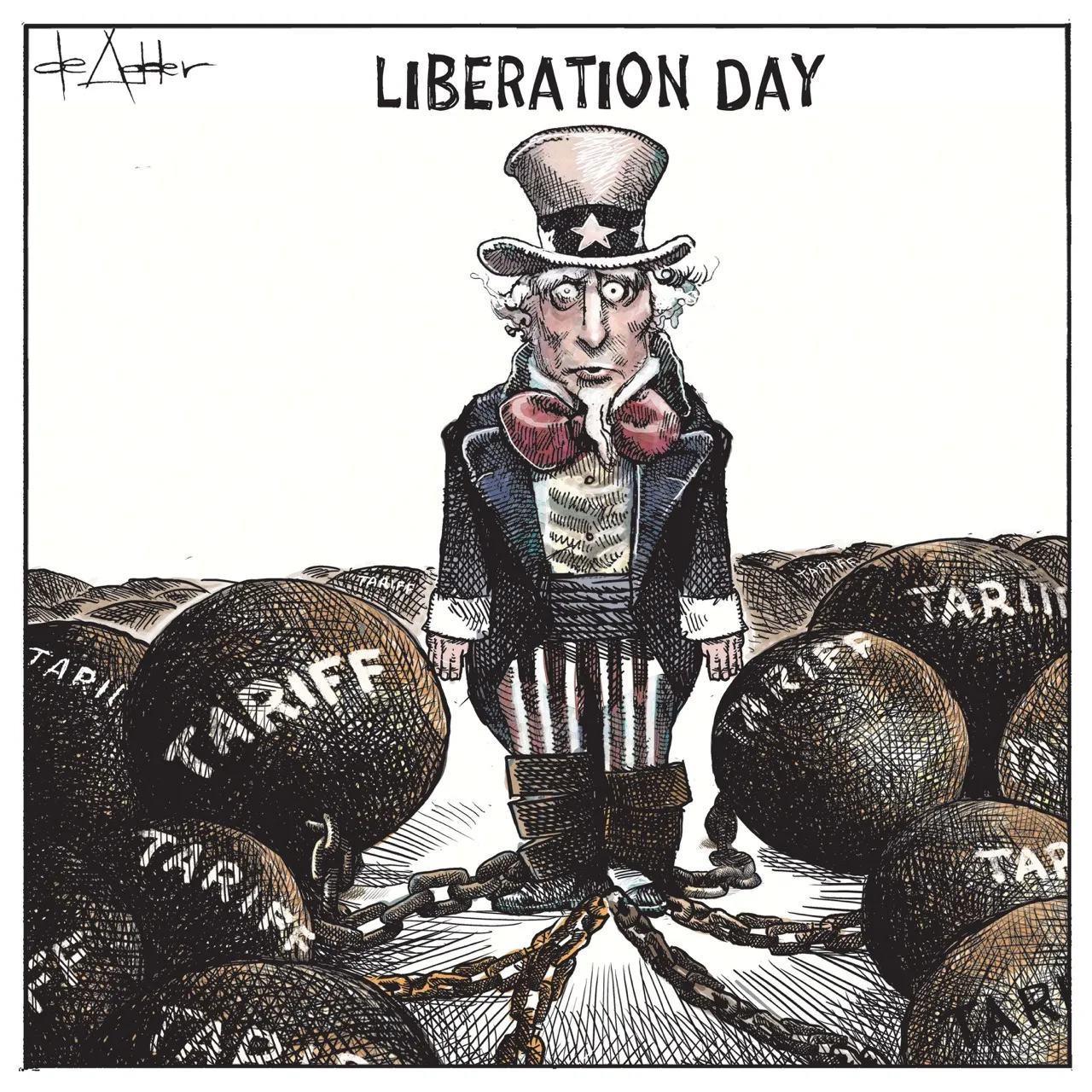All The Damage Trump’s Tariffs Are Doing
Just how could Donald trump’s so-called Liberation Day tariffs mess up the American and world economies and make us all worse off not just now, but for the long term?What Donald really wants is submission to his imagined
greatness, everything else be damned.
Let me count the ways, or at least a few of them.
- Consumer
prices will rise not only for imported goods, but domestic manufacturing
products as well. That’s because one of the basic points of tariffs is to
give domestic manufacturers the ability to raise prices to just below the
competing tariffed good, as I explained
here last September.
- The
other major global economies could form a free trade zone that excludes
the United States. Imagine a trading alliance among the European Union,
United Kingdom, Canada, Mexico, Japan, South Korea, Australia, New
Zealand, and perhaps China and India. That would spell D-I-S-A-S-T-E-R for
most Americans, especially the millions of factory workers whose ranks
shrank during Trump’s first term, but grew significantly under Biden.
- Even
worse, these countries could also stop using the greenback as the world
reserve currency, ending a massive and subtle subsidy to Americans.
About 60%
of global financial reserves are in dollars.
- China’s
patient but persistent drive to lead trade and economic policy, as well as
exert military power, in Asia and Oceana is likely to grow, especially
since Trump in his first term withdrew the U.S. from the proposed
Trans-Pacific Partnership trading zone (parts of which I criticized here, here,
and here as
damaging personal liberty, discouraging competitive market capitalism, and
expanding corporate power).
- Inflation
must worsen. Joe Biden got America’s inflation rate down to 2.9% in
December, well below the post-World War II average of 3.65%. When the data
comes in for March and April expect inflation to be up.
- The
risk of a recession is 45%. Goldman
Sachs estimates. On this, Goldman is one of the more optimistic
Wall Street firms.
- Countries
that allow American military bases — more than 800 are known publicly —
could pare back or even expel our military, refuse to dock our Navy ships
for refueling or repairs, and even end our positioning of Air Force
bomber, fighter, and surveillance aircraft on their soil.
- Countries
could stop honoring monopoly patents owned by American companies, a policy
shift that could devastate America’s extraordinarily profitable
pharmaceutical and digital enterprises.
- Over
time other countries could develop their own fiber optic cables
crisscrossing the oceans, hampering the gathering of signals intelligence,
or SIGINT, which is now easier because most global digital traffic flows
through the U.S., and is easily accessed by our allies, especially our
Five Eyes partners: Canada, the U.K., Australia, and New Zealand.
- The
rest of the world could join China in reducing purchases of American farm
products from beef and corn to poultry and soybeans. Trump’s first term
caused a massive shift in soybean sales to China. Midwest farmers lost out
to Brazil and that business hasn’t come back. Trump covered that over with
billions (note that B) in subsidies. During Trump’s first term these
subsidies nearly tripled from $11.5 billion to $32 billion.
If you doubt that friends could turn cold or even become hostile consider what Mark Carney, the new Canadian prime minister, said on March 28: “The old relationship we had with the United States based on deepening integration of our economies and tight security and military cooperation is over.”
Tariffs are not inherently bad. Used selectively these taxes
can be useful economic tools. But Trump has this bizarre and fact-free idea
that the country hit with tariffs pays them. It’s a demented, looney concept
with zero basis in fact but once Donald gets an idea in his head, I can tell
you from knowing him for 37 years, he doesn’t change his opinion. Facts matter,
except to Trump. In fact, consumers pay these taxes, which fall most heavily on
people down the income ladder.
Tariffs can be useful tools for developing countries and
when hostile foreign governments use stealth subsidies to help their industries
sell at below market prices, often called dumping. But as a general tool for a
mature economy like ours all tariffs do is create havoc, harm consumers by
raising prices, and damage economic growth.
There’s also hypocrisy in Trump’s love of tariffs. A decade
ago, Trump went to great lengths to evade U.S. tariffs on steel and aluminum he
bought from China, my friend Kurt
Eichenwald revealed in 2016.
The one thing trump’s tariffs will not do is prompt hundreds
of billions of dollars of investment in new factories here in America. That’s
because from the idea of a new factory to churning out the first product takes
years while Donald flip flops on tariffs and other issues almost by the day.
Only a fool would make huge investment decisions based on Trumpian whims.
Now there is one big benefit, for Donald, in his tariff
scheme. It’s the ego boost Trump gets from his swinging his tariff cudgel so
widely that he hit islands occupied only by penguins or by American and British
soldiers. At least 70 countries have indicated they will bend the knee to
Donald if that’s what it takes to lowers their tariff rate.
What Donald really wants is submission to his imagined
greatness, everything else be damned.
David Cay Johnston co-founded DCReport. He is a
best-selling author and investigative journalist who for 13 years reported for
The New York Times. Johnston is a specialist in economics and tax issues. He
won a 2001 Pulitzer Prize. He is a professor of practice teaching law, public
policy, and journalism at Rochester Institute of Technology.
